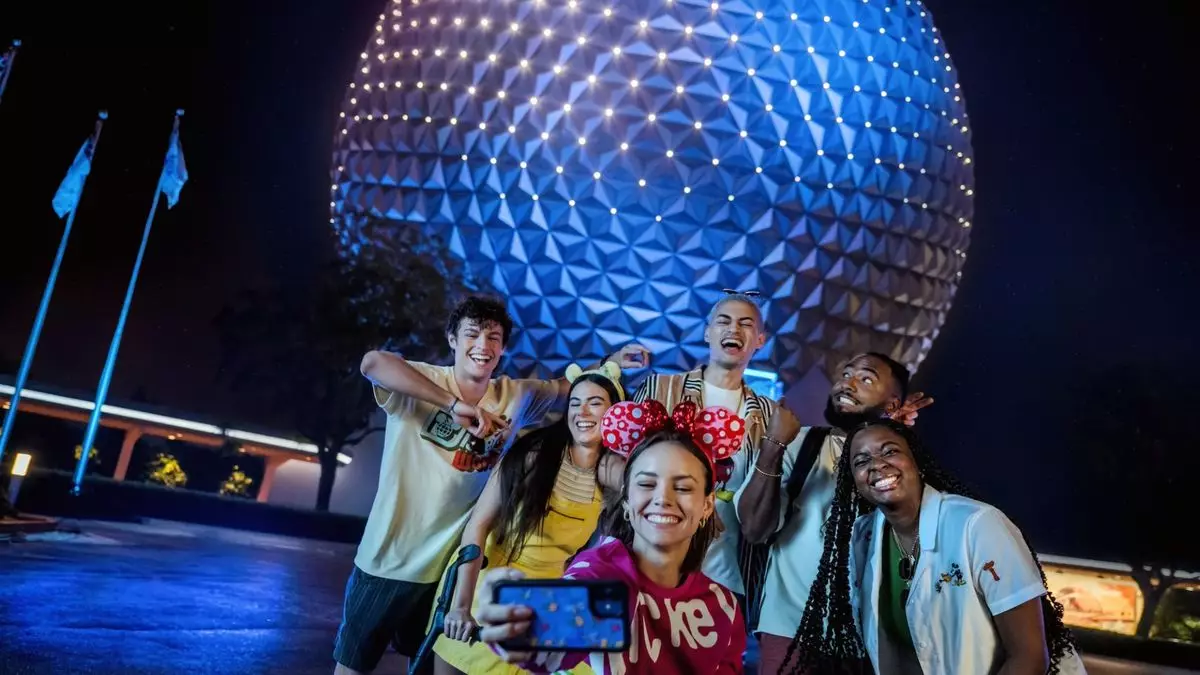Disney has long been synonymous with magic and seamless experiences, yet recent developments in its theme park operations reveal a more conservative approach as the company navigates the complexities of its Lightning Lane Premier Pass. This premium offering allows guests to access expedited entry to attractions but emphasizes a slow and careful deployment strategy, prompting discussions about its implications for guests and Disney’s bottom line.
Introduced last October, Disney’s Lightning Lane Premier Pass initially catered exclusively to guests at select Disney hotels. This exclusivity provided an opportunity for a controlled rollout, allowing Disney to observe guest response and operational efficacy. Now, the pass is accessible to all park visitors, but there’s a distinct priority for hotel guests, who can purchase it a week before their stay. Meanwhile, those not staying on property can buy the pass only three days in advance, which raises concerns about availability, particularly during busy seasons when demand may outstrip supply.
This layered access raises questions about fairness and equity among park visitors. Guests paying premium rates for on-site lodging naturally expect certain privileges, but Disneyland’s system may alienate some attendees, especially those utilising offsite accommodations. Furthermore, the limited nature of the pass can lead to frustration, as desperate guests may find themselves unable to secure access to the features they desire.
The Cautious Marketing Approach
During a recent earnings call, Disney CFO Hugh Johnston described the Premier Pass as “a premium product” and emphasized that the company is learning to navigate its potential. This cautious marketing approach suggests an effort to manage guest expectations and ensure the pass maintains its allure while balancing the experience for all park-goers. Johnston’s comments indicate that Disney is acutely aware of the delicate balance needed to enhance visitor experience among those who pay for the pass versus those who partake in regular admission.
This strategy is reminiscent of earlier product launches at Disney, which have been met with varied levels of excitement and criticism. By pacing the introduction of the Lightning Lane Premier Pass, the company may be trying to avoid the backlash that can accompany service disruptions or perceived inequalities in access.
The pricing structure for the Premier Pass is another crucial aspect warranting examination. Depending on the park and timing of the visit, costs can fluctuate significantly, ranging from $119 to $399 at Walt Disney World and between $300 and $400 at Disneyland. Given the variable pricing, there is an implied expectation that guests understand the value proposition associated with the pass. It’s a calculated move that reflects Disney’s ongoing attempt to balance profitability with consumer experience in an era of rising operational costs.
Additionally, while the Premier Pass may represent a new revenue stream for Disney, it is part of a broader portfolio of products aimed at reducing wait times. The company has also rolled out other skip-the-line options, allowing varying numbers of attraction access for a fixed price. This tiered offering allows for flexibility in guest choices but can lead to confusion about the best options available, potentially impacting ancillary service sales.
In a broader financial context, Disney Experiences, which encompasses theme parks and cruise lines, showed a modest revenue growth of 3% in fiscal Q1, translating to $9.42 billion. However, operating income remained flat, indicating challenges in profitability amid escalating operational costs, including hurricane-related losses and pre-opening expenses for new cruise ships. Such figures underscore the financial risks associated with launching new products like the Lightning Lane Premier Pass amidst unpredictable external factors.
Interestingly, Johnston noted an increase in international operating income amid a slight decline domestically, hinting at the importance of diversifying operations and offerings to mitigate risks associated with localized economic challenges. The upcoming celebrations of major park anniversaries and the introduction of new cruise ships may create additional opportunities for revenue bump, but the effectiveness of their marketing strategies will play a significant role in achieving those goals.
As Disney continues its cautious, studious approach to the Lightning Lane Premier Pass, it must balance the needs of its diverse guest population while navigating an intricate web of financial considerations. Its current approach may reflect an understanding of the market’s evolving dynamics and an appreciation for the need to provide not only premium products but also exceptional experiences for every visitor. The future of this offering will depend on Disney’s ability to adapt and respond to guest feedback, ensuring that its signature charm and customer satisfaction remain at the forefront of its operational strategy.


Leave a Reply